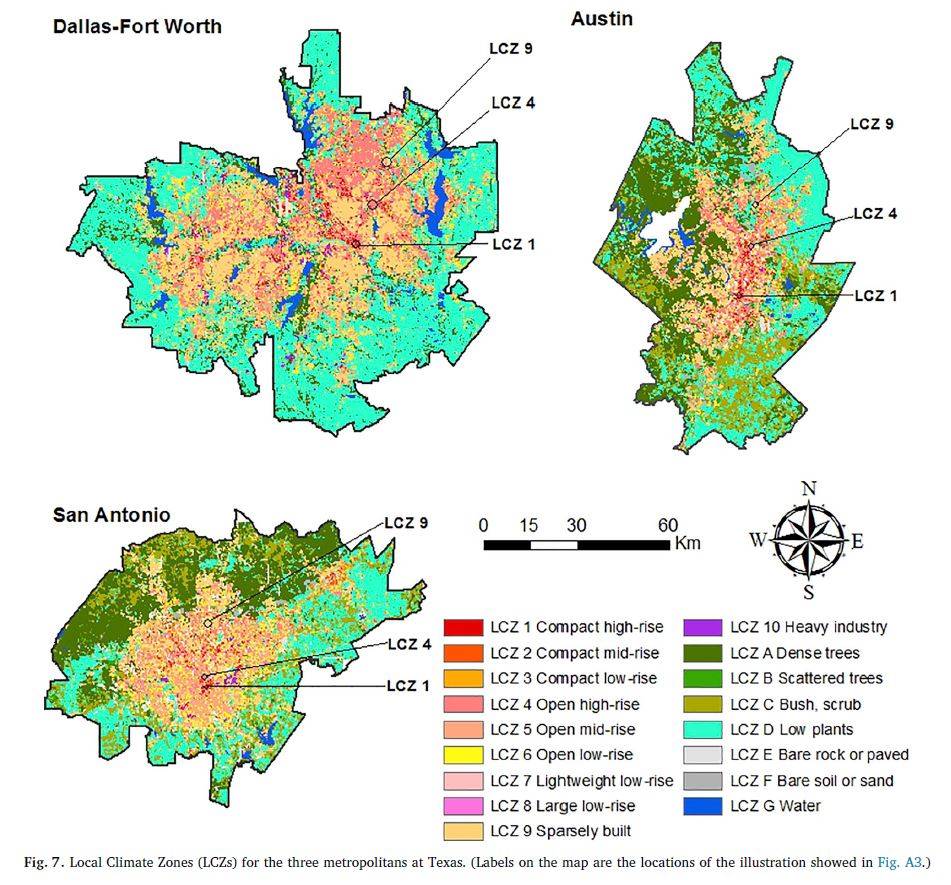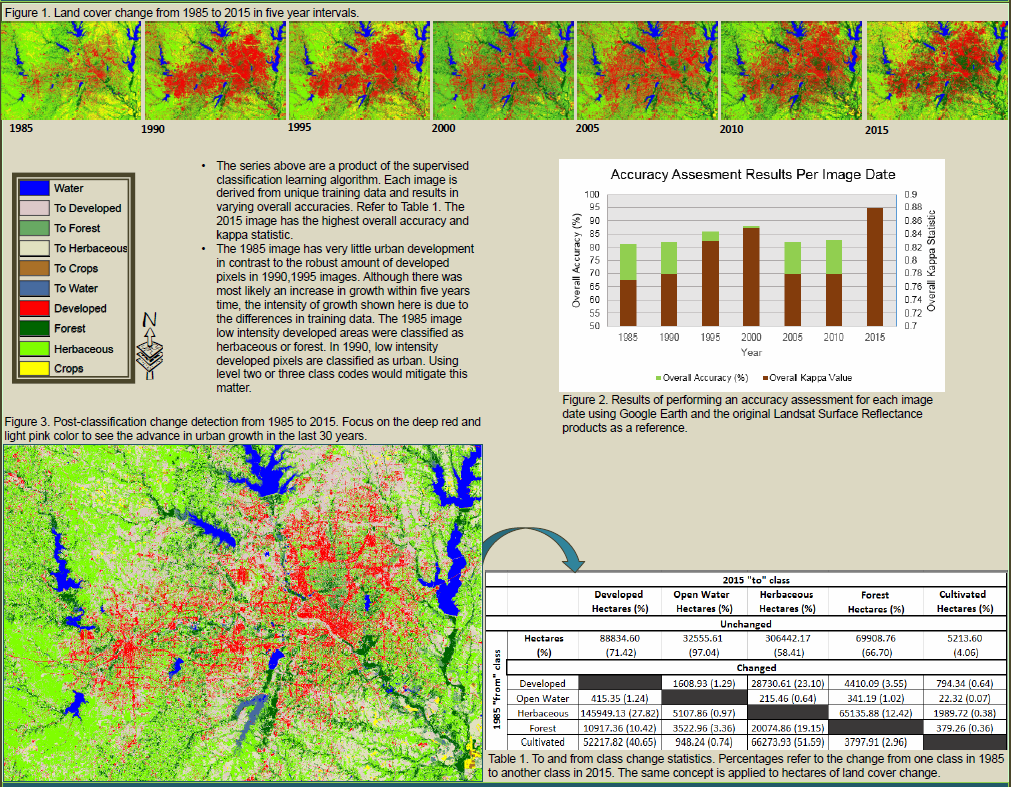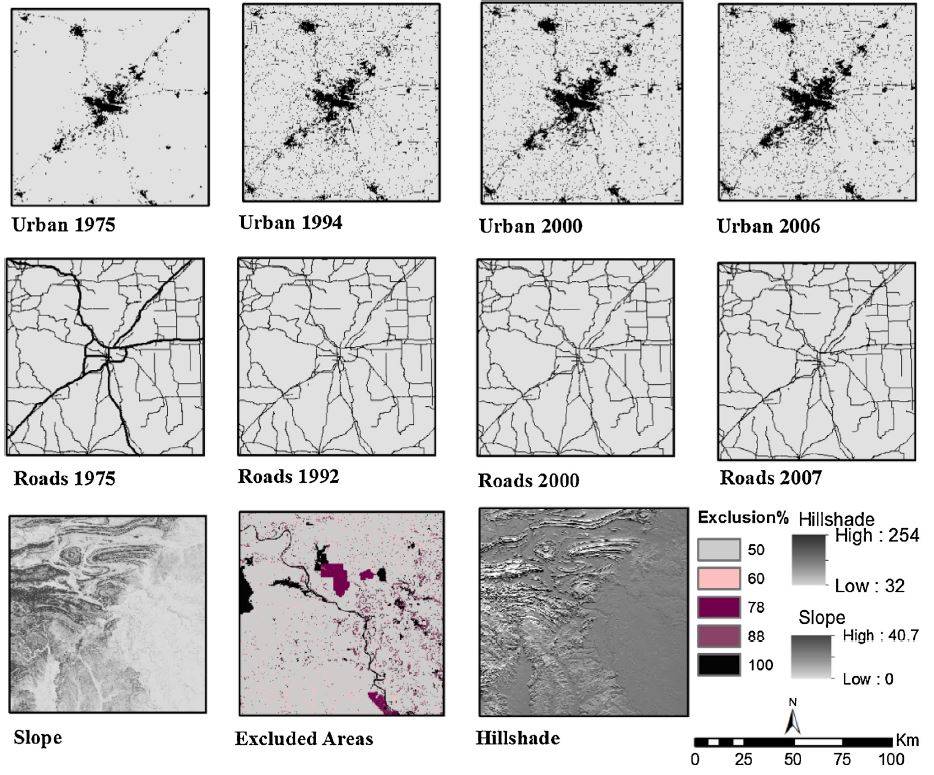Developed Landscapes
Application of airborne remote sensing data on mapping local climate zones: Cases of three metropolitan areas of Texas, U.S.

Urban and vegetation morphology profiles are important factors in local climate-related studies, but they are not as easily measured as land cover information to study urban landscape at metropolitan area. This study aims to develop a GIS-based Local Climate Zones (LCZs) mapping scheme to map and compare the LCZs for three major metropolitans in Texas: Dallas-Fort Worth (DFW), Austin, and San Antonio. Based on an analysis of the land cover and urban morphology, variables including land cover, height of roughness elements, building surface fraction, pervious surface fraction (PSF), and land use planning codes were generated and selected as LCZs classification properties. Then we designed the LCZs mapping scheme with decision-making algorithm was built for LCZs mapping. The key findings of LCZs of our study areas are that: 1) Most of the urbanized area are categorized into LCZ “open” types (characterized by building surface fraction of 15–40% and pervious surface fraction of 30–60%) for all three metropolitan areas with different proportions and spatial diversity; 2) LCZ D Low plants is dominant in areas surrounding DFW, while LCZ A Dense trees and LCZ D Low plants are dominant in Austin and San Antonio with clear regional contrast; 3) LCZs maps are in accordance with the underlying regional environment of the areas. Our study indicated that LiDAR-derived products can support LCZs mapping to identify urban morphological information and standardize the mapping scheme for further comparative studies of metropolitan areas.
Zhao, C., Jensen, J., Weng, Q., Currit, N. Weaver, R. 2019. Application of airborne remote sensing data on mapping local climate zones: Cases of three metropolitan areas of Texas, U.S. Computers, Environment and Urban Systems, 75, 175-193. doi.org/10.1016/j.compenvurbsys.2018.11.002
Urban Growth of the Dallas-Fort Worth Metroplex, Texas, 1985-2015

Among the most staggering changes for Texas in the past several decades has been the rapidly accelerating rate of urbanization – the U.S. Census Bureau reports that between 2010 and 2011, eight of the 15 fastest growing U.S. cities were in Texas (U.S. Census Bureau, 2012); a continuation of the rapid growth trend observed since 2000. For this project, we are documenting and analyzing urban expansion in Texas cities over the past several decades to help understand how societal factors affect the land cover transitions and patterns of urban growth.
Full poster
Jennifer Jensen jjensen@txstate.edu
The influence of physiography on historical and future land development changes: A case study of central Arkansas (USA), 1857–2030
The intricate interrelationships between environment and society result in unique landscapes, each with
its own development patterns and rates. While many studies have focused on how development impacts
the environment; this study quantifies the influence of the environment, relative to human historical
factors, on long-term (1857–2030) and large-scale (10,000 km2) development patterns in a region with
diverse physiography. A major component of this paper is the development of a Magnitude of Relative
Change (MRC) equation to empirically measure long-term development trends and rates at regional scale
in relation to multiple physiographic factors. We simulated past urban development trends and forecasted
future patterns for the central Arkansas (USA) region using a modified SLEUTH-3r urban growth model. In
doing this, we investigated the relationships and feedbacks between physiographic settings of the study
area and past and future development patterns. Another vital component of this research is the adoption
of an environmental historical approach to examine and evaluate development dynamics within and
among ecoregions. Our analytical approach emphasizes the potential of environmental forces to influence
land development transitions and at the same time appreciates the role of human advancements on
shaping those dynamics.
Jason Julian jason.julian@txstate.edu

